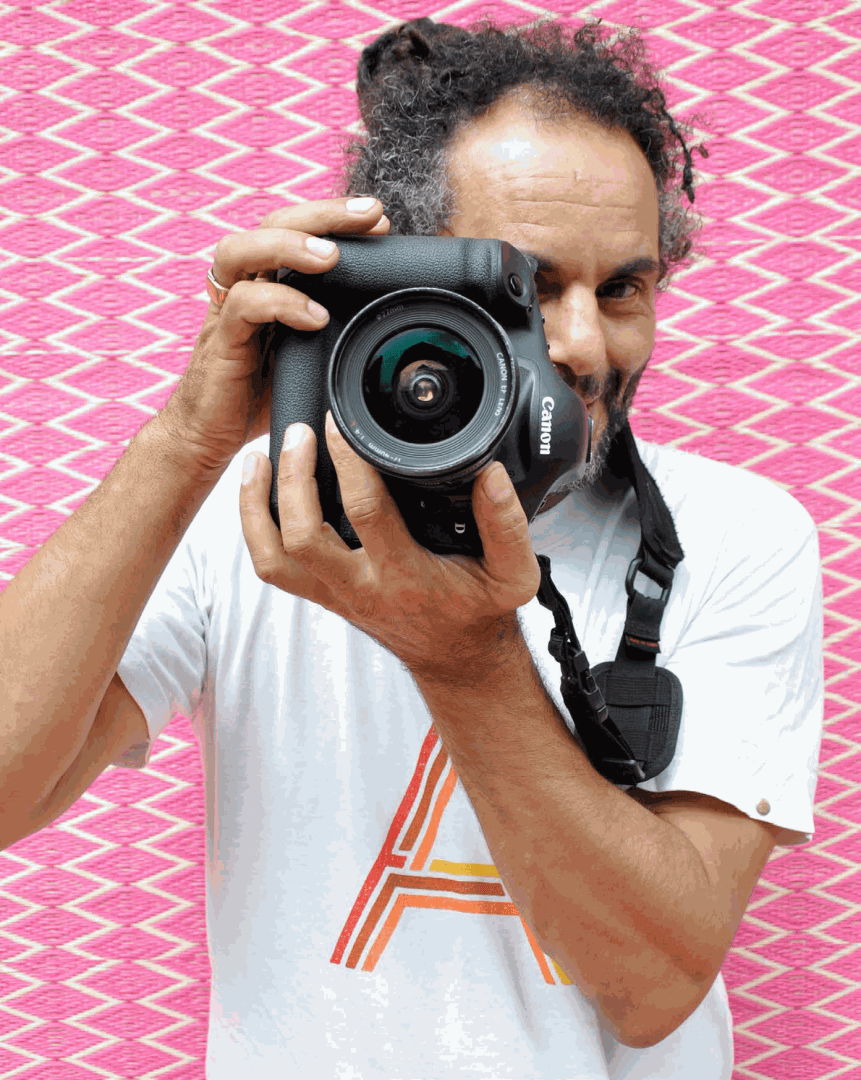Hassan Hajjaj looks back on early London life, his big break and why friends always count for more than money.
You spent your early childhood in Morocco before your family moved to London. Did you settle in easily?
HH: I was 12 when we first came to England. Life was very difficult. We spoke zero English and lived in one room. I landed in secondary school halfway through the year and had to attend special English classes. It was all really disruptive. I kinda went off the rails, skipping school (until my dad found out), having my ears pierced and getting tattoos, that sort of thing. By the time I was 15, I ended up leaving school with no qualifications. Looking back, I was a real teenage misfit.
How did you start making your way in life?
I did all sorts of odd jobs, working in shops, at a timber yard, as a gardener, doing a week here, three months there. I realised that I didn’t know what I wanted to do. Most of my friends were exactly the same. We had similar backgrounds from different countries, first generation arrivals. I was unemployed for maybe six years, during which time my friends and I used to go to a pool room. We convinced the owner to give us the basement so we could clean it up and hold Friday and Saturday night parties there. A Jamaican friend would bring along his sound system and this all developed into something else, something bigger.
Is that when you got into the music scene?
Absolutely. It was to become a big influence on my life, discovering good soul and reggae and organising music gigs and parties. This was the late 1970s, when it was hard for people of colour to hire a space to do an event. So, the parties would take place in private houses and I would set everything up. It was through music that I started connecting with the world of fashion and lifestyle.
When did you start getting involved with art?
From 1984 to 1992 I had a shop in Covent Garden called R.A.P, which was really to do with rap music but also stood for Real Artistic People. We sold what’s now called streetwear, but back then we didn’t know what it was. It was just an expression, at a time when London was becoming more of a so-called melting pot. Myself and my friends, who had all grown up misunderstood, we started to find our place in the world. We made our own spaces, played our own music and designed for ourselves the clothes we wanted to wear. The shop became a meeting place for fashion designers and artists, who’d come and hang out, and I’d work with them on showcasing their work there. I was developing my trade. When I later became an artist, I already understood about production and promotion, so this was really like my university.
Is that how you became interested in installation work?
Yes, and my first show, Graffix from the Souk, was all about that. I didn’t see it as an artwork, it was just something I wanted to make from my kind of cool things. I created a salon using Coca-Cola crates, really to give something back to the friends in London who had supported and influenced me. That’s how it all started.
When did you first say to yourself, “I’m an artist now”? Was there a big moment or was it a gradual thing?
It was definitely a moment. I was showing Graffix from the Souk in Marrakech at the gallery Ministero Del Gusto, when the famous Italian singer Pino Daniele came and bought a work. We had lunch and got on well, and he later called me and said he wanted to use the piece on the cover of his new album. We agreed terms, and he then invited me to Rome to sign copies at the launch. So I was there, signing away, and it was kind of boring – until I suddenly thought, hold on, I’ve sold some work, I’ve ended up in Rome, I’m doing this art thing. Maybe I should try it full-time, to challenge myself and see if I have something within me or if it’s just a moment, passing by. So that was a decision, a real moment.
You’ve become famous for your photography, but is it true that you’ve never had any formal instruction?
Totally. My first camera was a Pentax MX, which I bought from my great friend Zak Ové in 1989. Some photographer friends showed me how to use it and then I went out taking pictures. If I got stuck along the way, I’d just ask people. My camera was part of my body for many years, but I’ve never been to camera school and still don’t know my ISO and all that kind of stuff. I always say that I like to use photography as an expression.
What advice would you offer to young emerging artists?
Everybody’s journey is different, but one of the things that I always say is that if you’re doing it for the money, forget it. Because then you’re going to have problems. It’s the wrong attitude to start with. Art is something that’s long term, passionate and hard work. Never give up.
From the May/June 2021 issue of Canvas Magazine. A digital copy may be purchased here.

